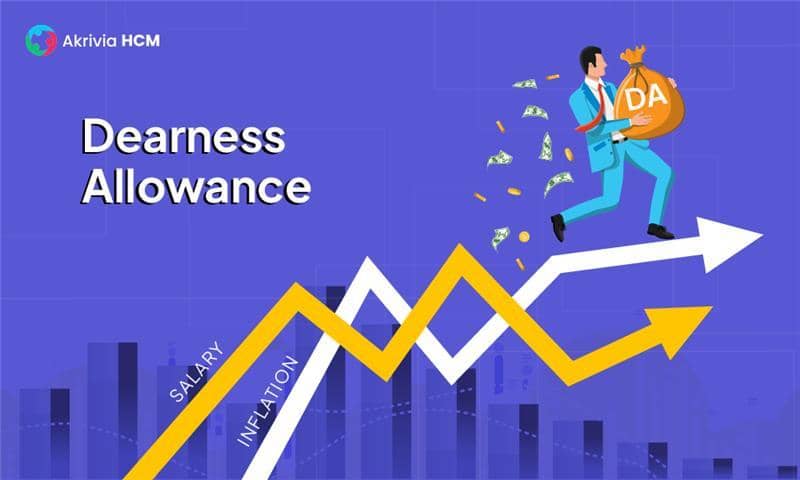Table of Contents

Dearness allowance refers to a fixed percentage of basic salary that is given to employees to offset the impact of inflation. It is a common component in most salary structures. Both central government and public sector employees have this component in their salaries. For private sectors, companies aren’t bound by law to provide it, but some companies still opt to offer a percentage of the basic salary as dearness allowance.
The concept of dearness allowance was first introduced during the Second World War to adjust the rising food costs, but now it is used to match the continuous rise in the cost of living.
Dearness allowance is an integral part of take-home salary, and it differs according to the location. As we know, the living costs in urban areas are higher, so companies provide more dearness allowance in cities but if you are working in rural or semi-rural areas, the amount will be less.
Dearness allowance is calculated two times in every financial year during January and July. The formulas for central government and public sector employees are different:
For central government employees:
For public sector employees:
Here, AICPI = All India Consumer Price Index
There are two types of dearness allowance:
The type of dearness allowance is applicable for public sector employees. The rate of IDA gets revised every quarter based on the changes in consumer price index (CPI).
The type of dearness allowance which is applicable for both central government and public sector employees. The rate of VDA gets revised every semi-annually depending on the changes in CPI.
The pay commission has to examine the different elements that construct an employee’s final salary. Dearness allowance is one of the most important factors considered by the Pay Commission, when it frames its reports. The pay commissions’ responsibility is to take into account every factor that helps determine salaries, including the periodic updating and revising of factors used to calculate dearness allowance.
According to the Income Tax Act, 1961, dearness allowance received by employees are fully taxable. Employees are required to mention the dearness allowance component separately when filing tax returns.
As the cost-of-living increases with time, so does dearness allowance. The calculation of DA is revised every financial year for eligible employees. After a constant revision in calculations every year, dearness allowance can reach an amount that is 50% of basic salary because of the adequate escalation effect. In this case, dearness allowance and basic salary merge after crossing the 50% of basic threshold. This is known as a dearness allowance merger.
Employees are often confused between the DA and HRA but the two make up for different salary components. The main differences between them have been outlined below:
No, dearness allowance and house rent allowance are different components of salary. Dearness allowance is given to meet the impact of rising inflation, while HRA is given for paying for rental accommodations.
Yes, dearness allowance is categorized under income and hence fully taxable.
All central government and private sector employees are liable to receive dearness allowance. At times, organizational policies for private sector comapanies also allow their employees to receive DA as a salary component.
Upon reaching 50% of basic salary, dearness allowance is merged with basic salary. This is called dearness allowance merger.
Let’s Recruit, Reward, and Retain
Your Workforce Together!
